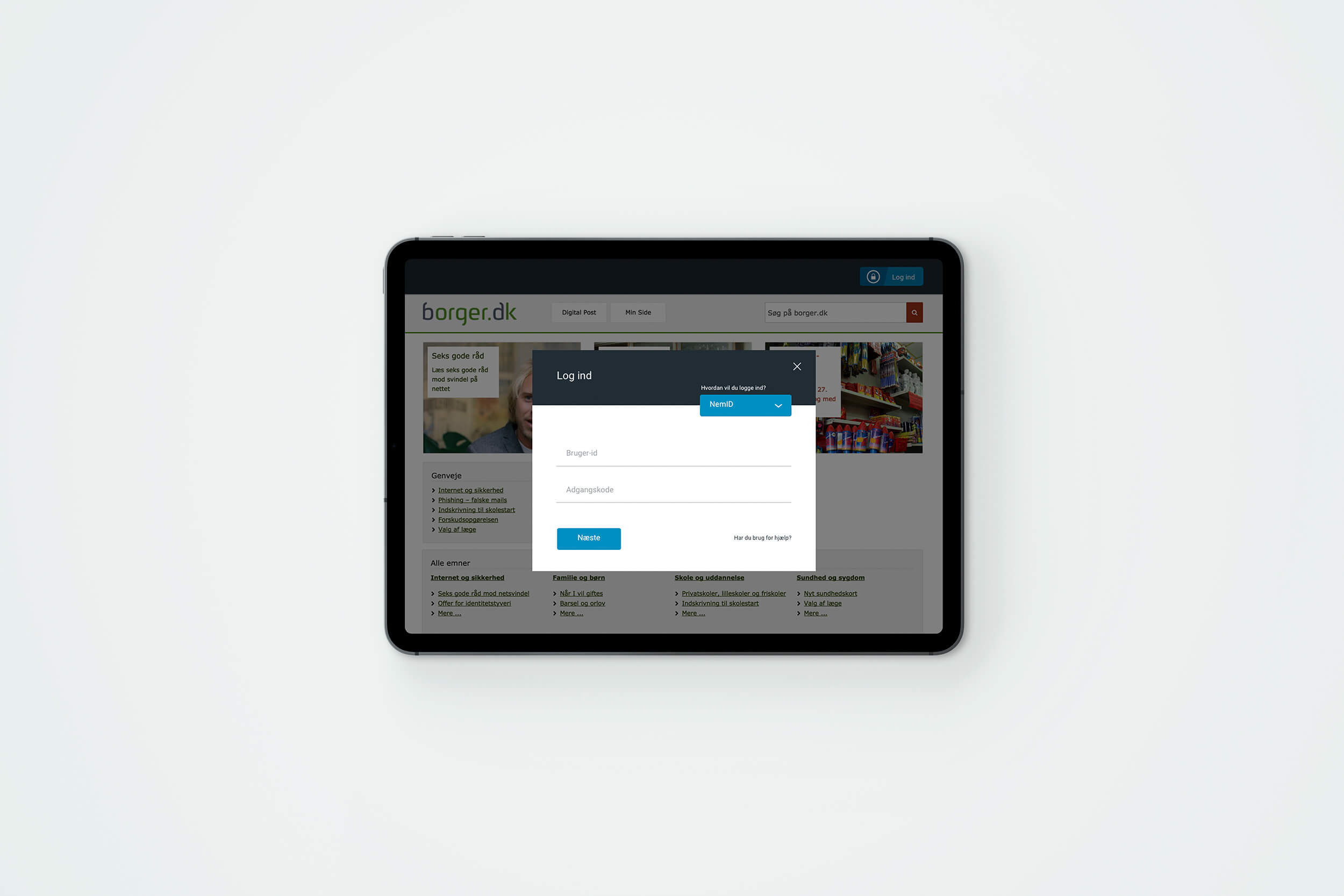
How might we improve login experiences for everyone in Denmark?
Denmark is one of the most digitized countries in the world. With one common log-in solution (NemID), Danes can access all public portals, online banking, and self-service solutions to apply for benefits, enroll their children to schools, or interact with civic organizations. Still, improvements to this infrastructure are needed to ensure seamless user experiences and easy-to-use digital solutions.
“
Morten is the best UX er I have ever met, and I have met quite a few. Like the best of his colleagues, his commitment to the needs of the users is unfailing, but what makes Morten stand out, is the quality of his suggestions. His solutions are a perfect mix of creativity and a sense of what is realistic, in terms of cost and what is technically possible.
Carsten Ingerslev, Head of Advanced Analytics at Danish Business Authority
01Process
02User insights
03Design iterations
04Log-in and user profiles
01 — Process
Concept refinement through iterative processes
I was the preferred UX consultant on a series of projects for the Danish Agency of Digitisations to improve the Danish public IT infrastructure. This case study focuses on central login experiences and was 6-month project.
- Continuous user involvement, research, and testing: Interviews, observations, and "support eavesdropping."
- Empathy-driven narratives about current user pains.
- Cross-disciplinary co-creation workshops (business, IT, legal).
- Iterative concept development, wireframing, and prototyping.
- Test and concept refinements
- Management presentations and decision proposals.
Main activities in the project
02 — User insights
Identifying pain points.
To understand how the log-in and user administration could be improved, we conducted qualitative interviews with four citizens and six businesses. The sessions were 1.5 - 2 hours long and were facilitated as open-ended interviews. Each session focused on specific user scenarios that the participants were familiar with. On a computer, the participants would walk us through their interactions and pain points.
- Log-in is not integrated into the portals.
- Log-in modules are inconsistent across portals.
- Log-in status is not always shown in the UI.
- User administration is exceptionally cumbersome for businesses.
- People borrow credentials from others for convenience (security issues).
Key insights were:
03 — Design iterations
Design explorations and iterations.
To remedy the pain points identified in the user research, we explored a range of concepts and ideas. I iteratively qualified the concepts by sharing them with critical stakeholders who critiqued the work. For each iteration, new details and vital aspects were added to the wireframes.
04 — Log-in and user profiles
Model for user profiles and seamless login.
One of the significant issues in the current version is the lack of flexibility in user profiles. As a business owner of a small business, it might be useful to use the same login credentials that is used as a citizen, whereas larger organizations may require all employees to use a company profile.
The wording and interfaces in the current infrastructure are highly technical and are hard to understand for most people. To deal with this, I created a new model for the relationship between a person and her user profiles.
The final result is a concept for how to implement a coherent login flow across different portals. The emphasis was on recognizability, flexibility in profile selection, and adaptability to all platforms.
The Danish Agency of Digitisation is now finishing the tenders for the next generation of the infrastructure components. Within a few years, I hope to see the principles and concepts integrated in the new solutions.
Read more here